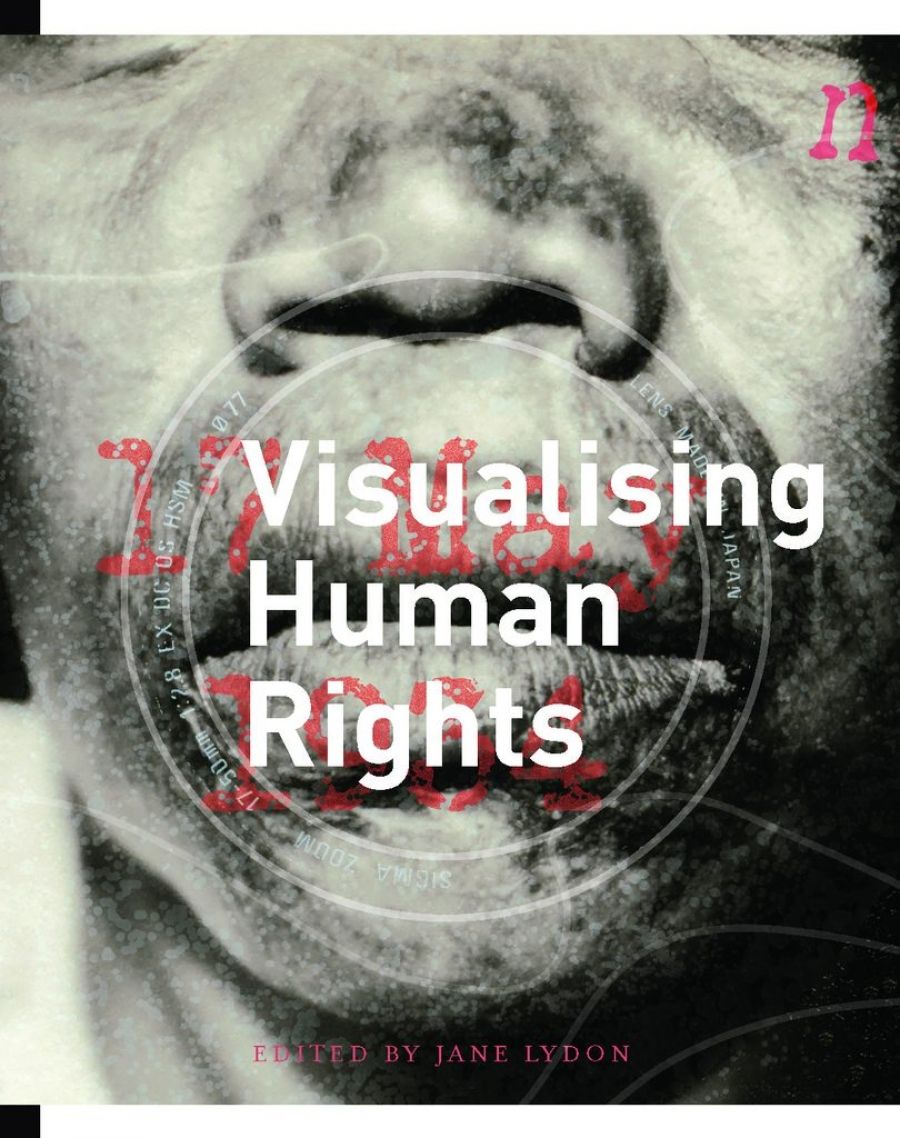
- Free Article: No
- Contents Category: Photography
- Custom Article Title: Alison Stieven-Taylor reviews <em>Visualising Human Rights</em> edited by Jane Lydon
- Custom Highlight Text:
How do you visually portray a concept like human rights? Much of the scholarship around this question focuses on the idea that to understand what human rights might look like, we have to visualise life without them. Historically, photography has played a significant role in exposing violations of human rights to a mass audience ...
- Book 1 Title: Visualising Human Rights
- Book 1 Biblio: UWA Publishing, $34.99 pb, 188 pp, 9781742589978
In ‘The Right to an Image’, Sharon Sliwinski suggests that the pursuit of human rights involves the individual’s ability to shape his or her self-image. Framed by the idea of the ‘social imaginary’, Sliwinski argues that images promote common cultural perceptions, which can be denigrating and one-dimensional. Sliwinski draws on several examples, including abolitionist Frederick Douglass, who used photography in the mid-1800s to dispute the prevailing idea of a ‘Negro type’. She also references American Eve Arnold’s photographs of passive civil rights protests to argue that, by challenging the visual norm, one can create a new dialogue.
 Unknown photographer, Frederick Douglass (c.1841-1845), Full-plate daguerreotype. Onondaga Historical Association.
Unknown photographer, Frederick Douglass (c.1841-1845), Full-plate daguerreotype. Onondaga Historical Association.
Susie Protschky addresses the idea of human rights through an analysis of Dutch soldiers’ personal photographs. In ‘Soldiers as Humanitarians: Photographing war in Indonesia (1945–1949)’ Protschky demonstrates how the soldiers’ pictures ignore the role of the Dutch as colonisers and instead focus on the inhumanity of the revolutionaries. In this scenario, the Dutch soldiers depict themselves as humanitarians and ‘render invisible’ their complicity in the act of oppression. Here, the photograph stands for both individual and collective memory, constructing a view of history that ‘sanitised Dutch colonial violence’ by portraying the Indonesian republic as incapable of caring for its citizens.
In ‘Sharing a Personal Past: #iwasarefugee #iamarefugee on Instagram,’ Mary Tomsic argues that the public view of refugees is constructed by the media, and that it is rare for refugees to enact self-representation in images. Tomsic presents a case study on Instagram to discuss how former refugees are using social media to counter the homogenised visual portrayal of refugees in mainstream media. On Instagram, individuals who were child refugees and are now adults in their adopted country are posting pictures of themselves as children. By connecting past experiences to the present through the use of hashtags – #iwasarefugee #iamarefugee – a broader narrative unfolds where human rights are found in the dignity of being ‘visually recognised’.
Suvendrini Perera and Joseph Pugliese address the Australian government’s treatment of asylum seekers in the essay ‘Between Spectacle and Secret: The Politics of Non-Visibility and the Performance of Incompletion’. In their analysis of the 2015 public event Call to Account, which is now also a film, the pair investigates the visual as a performative act of protest. In Call to Account, citizens, non-citizens, and ‘never-to-be citizens’ challenge the Australian government’s refugee policy, which obfuscates through both spectacle and censorship.
In ‘An Avatar of Peace: Commemorating human rights activism’, Vera Mackie explores the affective capacity of a bronze statue of a Korean girl in traditional dress. Located in Seoul, this statue ‘commemorates the demonstrations that have taken place on that site for over twenty-five years on the issue of militarised sexual abuse perpetuated by the Japanese Army and Navy in the Asia-Pacific War’. Mackie reveals how and why interaction with the ‘Peace Monument’ may encourage viewers to participate in ‘further activism on human rights issues’.
 Image of Hazara refugees, taken by Barat Ali Batoor as part of his Hazara Exodus series.
Image of Hazara refugees, taken by Barat Ali Batoor as part of his Hazara Exodus series.
Artist Brenda L. Croft shares a very personal journey of discovery as she visually retraces ‘the footprints of her Gurindji/Malgnin/Mudburra relatives who famously walked off Wave Hill pastoral station in the Northern Territory in 1966 on strike’. In ‘home/lands’, Croft’s visual narrative is woven around the story of her father, Joseph Croft, one of the Stolen Generations. Through photography, Croft tells a complex tale of displacement and abuse, identity and kinship, drawing on historical roots that point to contemporary concerns.
The final chapter, ‘“Never Look Away”: Humanitarianism and Australian Newspaper Photographers’ by Fay Anderson, considers the ‘humanitarian impulse/ethos’ in Australian photojournalism. Anderson argues that while newspaper photographers may be personally committed to telling difficult yet important stories, traditionally they have been censored by the commercial and political imperatives of the media. Anderson illuminates the machinations behind the evolution of press photography in Australia, providing important insights gleaned from interviews with past and present photojournalists.
Visualising Human Rights reveals that while photography may be a universal language, it is not the only visual form through which human rights can be imagined. However, at a time when the photograph is omnipotent, this book points to the significance of understanding how to read a picture, comprehend its nuances, and identify its political narrative. By analysing the content, context, and response to images, and by demonstrating the myriad ways in which human rights can be visualised, this book makes an important contribution to advancing visual literacy.


Comments powered by CComment